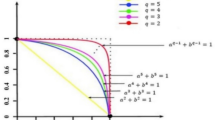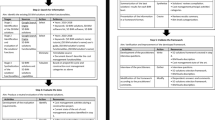Abstract
The evaluation of cost overrun factors were carried out in this research study using fuzzy logic soft computing tool to analyze survey reports from professionals and expert in the construction industry. Due to value engineering underestimating of the actual cost during cost budgeting, cost overrun results in experienced costs exceeding the budgeted amount. Through relevant literature and thorough investigative study, the cost overrun factors were uncovered and structured in a questionnaire design. This investigative study was carried out on building project contractors, consultants and project managers in Nigeria. The obtained results from survey report indicated Poor communication among stakeholders and Contractor’s financial constraints were the most severe factors causing cost overruns with SI of 4.29. The model development was carried using the survey results in MATLAB software, and the processing parameters are: Mamdani fuzzy inference system type, maximum and minimum function for aggregation and implication, respectively, centroid method of defuzzification, membership function parameters: trapezoidal, triangular and Gaussian. Fuzzy logic model performance evaluation was further achieved producing mean absolute percentage error, root mean square error and coefficient of determination of 0.115%, 0.321 and 0.995, respectively. The results showed good connection between the actual and fuzzy logic model estimated results which indicates good model prediction performance.









Similar content being viewed by others
References
Acharya NK, Lee YD, Kim JK (2006) Critical construction conflicting factors identification using analytical hierarchy process. KSCE J Civil Eng 10(3):165–174
Alda França, Haddad A (2018). Causes of construction projects cost overrun in Brazil. Int J Sustain Constr Eng Technol 9(1): 2180–3242 (2018)
Oberlender GD, Peurifoy RL (2002) Estimating construction costs, 5th edn. McGraw Hill, Boston
Rajakumar AC (2016) Analysis of cost overrun in road construction activities–a critical review. Int Res J Eng Technol (IRJET) 03(04):785–794
El-Kholy AM (2015) Predicting cost overrun in construction projects. Int J Constr Eng Manag 4(4):95–105
Al-Hazim N, Salem ZA (2015) Delay and cost overrun in road construction projects in Jordan. Int J Eng Technol 4(2):288–293
AlSehaimi A, Koskela L (2008) What can be learned from studies on delay in construction? In: Proceedings for the 16th annual conference of the international group for lean construction, pp 95–106
Lowe D, Emsley M, Harding A (2006) Predicting construction costs using multiple regression techniques. ASCE J Constr Eng Manag 132(7):750–758
Batselier J, Vanhoucke M (2015) Construction and evaluation framework for a real life project database. Int J Project Manag 33(3):697–710
Aibinu A, Jagboro G (2002) The effects of construction delays on project delivery in Nigerian construction industry. Int J Project Manag 20(8):593–599
Jackson O, Steven O (2001) Management of cost overrun in selected building construction project in Ilorin. Rev Bus Finance 3(1):1–8
Omoregie A, Radford D (2006) Infrastructure delays and cost escalation: causes and effects in Nigeria. Paper presented at the Proceeding of sixth international postgraduate research conference
Alaneme GU, Onyelowe KC, Onyia ME, Buivan D, Mbadike EM, Dimonyeka MU, Attah IC, Ogbonna C, Iro UI, Kumari S, Firoozi AA, Oyagbola I (2020) Modelling of the swelling potential of soil treated with quicklime-activated rice husk ash using fuzzy logic, Umudike. J Eng Technol 6(1):1–22. https://doi.org/10.33922/j.ujet_v6i1_1
Mazer WM, Geimba DL (2011) Numerical model based on fuzzy logic for predicting penetration of chloride ions into the reinforced concrete structures–first estimates. In: De Freitas VP, Corvacho H, Lacasse M (eds) XII DBMC international conference on durability of building materials and components, FEUP Edições, Porto, 2011
Carvalho JG, Costa CT (2017) Identification method for fuzzy forecasting models of time series. Appl Soft Comput 50:166–182
Nasrollahzadeh Y, Basiri MM (2014) Prediction of shear strength of FRP reinforced concrete beams using fuzzy inference system. Expert Syst Appl 41(2014):1006–1020. https://doi.org/10.1016/j.eswa.2013.07.045
Bhatia D (2016) Schedule overrun and cost overrun in the construction of private residential construction project: case study of Pune India. Int J Tech Res Appl 4(2):174–177
Frimponga Y, Oluwoye J, Crawford L (2003) Reasons of delay and cost overruns in construction of groundwater projects in a developing country; Ghana as a case study. Int J Project Manag 21(5):321–326
Saeed SAA (2009) Delay to projects–cause, effect and measures to reduce/eliminate delay by mitigation/acceleration [Unpublished Project management programme dissertation], p. 1–137. Dubai: The British University in Dubai.
Sunjka BP, Jacob U (2013) Significant causes and effects of project delays in the Niger delta region Nigeria. In: SAIIE25 proceedings: Stellenbosch South Africa # 2013 SAIIE. http://citeseerx.ist.psu.edu/viewdoc/download?doi=10.1.1.882.9428&rep=rep1&type=pdf
Shanmugapriya S, Subramanian DK (2013) Investigation of significant factors influencing time and cost overruns in Indian construction projects. Int J Emerg Technol Adv Eng 3(10):734–740
Sambasivan M, Soon YW (2007) Reasons and consequences of delays in Malaysian. Int J Project Manag 25(5):517–526
Shibani A (2015) Avoiding cost overruns in construction projects in India. J Manage Stud 3(7–8):192–202
Hanna M, Ruwanpura JY (2007) Simulation tool for manpower forecast loading and resource leveling. In: Simulation conference. 2007 winter. IEEE, Washington
Memon AH, Rahman IA, Azis AAA (2011) Preliminary study on causative factors leading to construction cost overrun. Int J Sustain Construct Eng Technol 2(1):57–71
Baloi D, Price AD (2003) Modelling global risk factors affecting construction cost performance. Int J Project Manag 21(4):261–269
Le-Hoai L, Lee YD, Lee JY (2008) Delay and cost overruns in Vietnam large construction projects: a comparison with other selected countries. KSCE J Civ Eng 12(6):367–377
Enshassi A, Al-Najjar J, Kumaraswamy M (2009) Delays and cost overruns in the construction projects in the Gaza Strip. J Financ Manag Prop Construct 14(2):126–151
Mamdani EH (1975) Fuzzy logic control of aggregate production planning. Int J Man Mach Stud 7:1–13
Alaneme GU, Mbadike EM, Iro UI, Udousoro IM, Ifejimalu WC (2021) Adaptive neuro-fuzzy inference system prediction model for the mechanical behaviour of rice husk ash and periwinkle shell concrete blend for sustainable construction. Asian J Civ Eng 2021(22):959–974. https://doi.org/10.1007/s42107-021-00357-0
Tavakolan M, Etemadinia H (2017) Fuzzy weighted interpretive structural modeling: improved method for identification of risk interactions in construction projects. J Constr Eng Manag 143(2004):1–14
Chanas S, Zieliã P (2001) Critical path analysis in the network with fuzzy activity times. Fuzzy Sets Syst 122:195–204
Zadeh L (1965) Fuzzy sets-information and control. University of California, Berkeley
Sayed T, Tavakolie A, Razavi A (2003) Comparison of adaptive network based fuzzy inference systems and B-spline neuro-fuzzy mode choice models. J Comput Civ Eng 17(2):123–130. https://doi.org/10.1061/(ASCE)0887-3801(2003)17:2(123)
Gündüz M, Nielsen Y, Özdemir M (2013) Fuzzy assessment model to estimate the probability of delay in Turkish construction projects. J Manag Eng 31(4):1–14
Alaneme GU, Mbadike EM (2021) optimisation of strength development of bentonite and palm bunch ash concrete using fuzzy logic. Int J Sustain Eng. https://doi.org/10.1080/19397038.2021.1929549
Chileshe N, Berko P (2010) Causes of project cost overruns within the Ghanaian road construction sector. In: Proceedings of the 5th built environment conference, Durban, South Africa, 18–20, July 2010
Fellows R, Liu A (2008) Research methods for construction. WileyBlackwell, Oxford
Saris WE, Gallhofer IN (2007) Design, evaluation, and analysis of questionnaires for survey research: Wiley series in survey methodology. Wiley, New Jersey
AbouRizk S, Halpin D (1992) Statistical properties of construction data. J Constr Eng Manag 118:525–544
Özkan G, Inal M (2014) Comparison of neural network application for fuzzy and ANFIS approaches for multi-criteria decision making problems. Appl Soft Comput 24:232–238. https://doi.org/10.1016/j.asoc.2014.06.032
Alaneme GU, Mbadike EM, Attah IC, Udousoro IM (2022) Mechanical behaviour optimization of saw dust ash and quarry dust concrete using adaptive neuro-fuzzy inference system. Innov Infrastruct Solut 7:122. https://doi.org/10.1007/s41062-021-00713-8
Topcu IB, Sarıdemir M (2008) Prediction of mechanical properties of recycled aggregate concretes containing silica fume using artificial neural networks and fuzzy logic. Comput Mater Sci 42(1):74–82
Zeng J, An M, Smith NJ (2007) Application of a fuzzy based decision making methodology to construction project risk assessment. Int J Project Manag 25(6):589–600
Senouci A, Ismail A, Eldin N (2016) Time delay and cost overrun in Qatari public construction projects. In: Procedia engineering, vol 164, pp 368–375
Mirahadi F, Zayed T (2016) Simulation-based construction productivity forecast using neural-network-driven fuzzy reasoning. Autom Constr 65:102–115. https://doi.org/10.1016/j.autcon.2015.12.021
Alaneme GU, Dimonyeka MU, Ezeokpube GC, Uzoma II, Udousoro IM (2021) Failure assessment of dysfunctional flexible pavement drainage facility using fuzzy analytical hierarchical process. Innov Infrastruct Solut. https://doi.org/10.1007/s41062-021-00487-z
Onyelowe KC, Alaneme GU, Onyia ME, Van Bui D, Diomonyeka MU, Nnadi E, Ogbonna C, Odum LO, Aju DE, Abel C, Udousoro IM (2021) Onukwugha E (2021) Comparative modeling of strength properties of hydrated-lime activated rice-husk-ash (HARHA) modified soft soil for pavement construction purposes by artificial neural network (ANN) and fuzzy logic (FL). J Kejuruter 33(2):365–384. https://doi.org/10.17576/jkukm-2021-33(2)-20
Zadeh, Lotfi A (1992) Fuzzy logic for the management of uncertainty. In: Zadeh LA, Kacprzyk J (eds). John Wiley & Sons, New York.
Alaneme GU, Attah IC, Mbadike EM, Dimonyeka MU, Usanga IN, Nwankwo HF (2022) Mechanical strength optimization and simulation of cement kiln dust concrete using extreme vertex design method. Nanotechnol Environ Eng 7 4:467–490. https://doi.org/10.1007/s41204-021-00175-4
Alaneme George U, Mbadike Elvis M (2019) ‘Modelling of the mechanical properties of concrete with cement ratio partially replaced by aluminium waste and sawdust ash using artificial neural network. SN Appl Sci 1:1514. https://doi.org/10.1007/s42452-019-1504-2
Author information
Authors and Affiliations
Corresponding author
Ethics declarations
Conflict of interest
The authors declare that there is no conflicting interest in the publication of this paper.
Ethical approval
This research study was conducted as approved by the research ethical committee of the Post graduate school, Michael Okpara University of Agriculture Umudike, Nigeria. We also affirm that the content of this work is original and has followed the journal template.
Informed consent
Informed consent was obtained prior to performing the research procedure which includes permission to publish respondents’ views and study area map included herein.
Additional information
Publisher's note
Springer Nature remains neutral with regard to jurisdictional claims in published maps and institutional affiliations.
Supplementary Information
Below is the link to the electronic supplementary material.
Rights and permissions
Springer Nature or its licensor holds exclusive rights to this article under a publishing agreement with the author(s) or other rightsholder(s); author self-archiving of the accepted manuscript version of this article is solely governed by the terms of such publishing agreement and applicable law.
About this article
Cite this article
Obianyo, J.I., Okey, O.E. & Alaneme, G.U. Assessment of cost overrun factors in construction projects in Nigeria using fuzzy logic. Innov. Infrastruct. Solut. 7, 304 (2022). https://doi.org/10.1007/s41062-022-00908-7
Received:
Accepted:
Published:
DOI: https://doi.org/10.1007/s41062-022-00908-7




